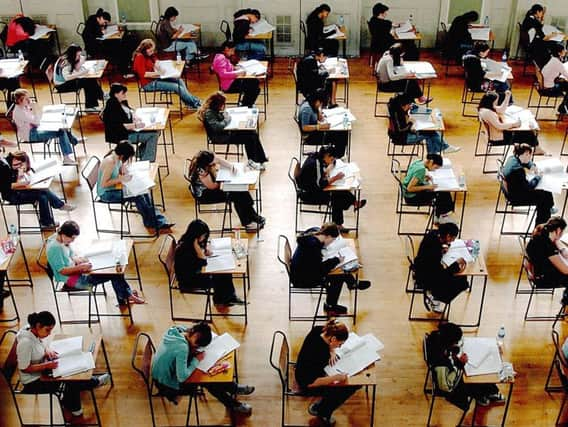Poorer primary school children are failing to keep up with their peers


Disadvantaged pupils’ grades lagged 2.9 per cent behind their peers, a rate unchanged compared with last year, though the general trend has seen the gap close slightly from 3.4 per cent in 2011.
Advertisement
Hide AdAdvertisement
Hide AdAbout half of disadvantaged pupils - those eligible for free school meals - achieved the expected standard across all three subjects, compared with 71 per cent of more advantaged classmates.
Girls are also pulling further ahead of boys, the figures from the Department for Education show.
Seven in 10 girls reached the expected standard in reading, writing and maths, compared with 60 per cent of boys.
The gender gap of 10 percentage points is up from eight points last year.
Advertisement
Hide AdAdvertisement
Hide AdThe increase has been driven by a widening gap between in reading results, the statistics show.
Some 78 per cent of girls reached the expected standard in reading this year, compared with 69 per cent of boys - a gap of nine percentage points. Last year, there was a gap of eight points.
The biggest gulf is still in writing, where girls outperform boys by 12 points.
In maths, girls are ahead by just one point.
Advertisement
Hide AdAdvertisement
Hide AdYorkshire students performed just below average compared with the rest of the UK, with 63 per cent of children meeting the required grade. The national average was 65 per cent.
London pupils performed the best at 69 per cent, while pupils in the East Midlands had the lowest attainment with 62 per cent who met the expected standard.
Paul Whiteman, general secretary of the National Association of Head Teachers (NAHT), said: "We need to be very careful of reading too much into small year-on-year fluctuations in the results of a single cohort in a single subject.
"There is a long-standing gender gap when it comes to reading and writing, which is certainly a concern, and is something teachers are constantly attempting to tackle."
Advertisement
Hide AdAdvertisement
Hide AdSchool standards minister Nick Gibb said the national results are "testament to the hard work of pupils, parents and teachers".
Also in news: Failure to fund extra flood defences in Leeds is an insult to the city, MP Rachel Reeves tells Sajid Javid
Children across England sit reading and maths tests in their final year of primary school, while writing is assessed by teachers.
Mr Gibb said: "We want all pupils to leave primary school equipped with the knowledge and skills that will help them to be successful in the rest of their education and beyond - that's why I'm pleased to see an increase in pupils reaching the very highest standards at the end of primary school."
Advertisement
Hide AdAdvertisement
Hide AdSATs tests were overhauled in 2016 as part of Government reforms to introduce more rigorous assessments.
The tests are controversial, with some arguing they put too much pressure on children and are not a true picture of a school's performance.
The Government has said the tests are a measure of school standards and are used to hold primaries to account, rather than measure individual pupils.